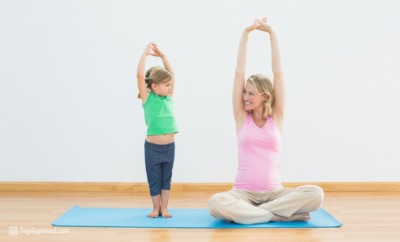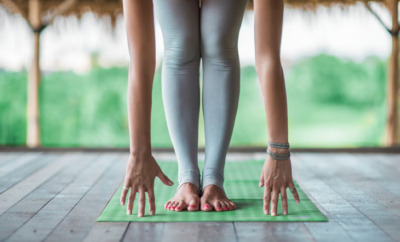6 Things Every New Yoga Teacher Should Know

6 things every yoga teacher needs to know
I will never forget how I felt when I taught my first yoga class. My 200 hours of training suddenly felt like two. Who was I to lead a room full of people through eighty minutes of yoga?
I learned a lot about myself that day, but the most important lesson I learned is that I can do anything I set my mind to. And so can you! Teaching yoga can be frightening and stressful for even the most experienced yoga teacher. Don’t let your fears and doubts get the best of you.
Here are 6 rules every new yoga teacher should practice:
1. Maintain your personal practice
Only by deepening your own practice will you find the inspiration and motivation to guide others on their own yoga journey. It is important to maintain both an “in studio” and “at home” practice. When you take a studio class, you are exposed to a diverse range of teaching backgrounds and methodologies that will help influence your personal development. An at home practice is also important. It gives you time alone to notice how your body feels in the postures. The more you truly notice how a posture feels in your body, the better you will be able to guide your students.
2. Take Every Opportunity to Teach
Teach as often as you can! Never turn down an opportunity to teach a yoga class, whether it’s a private session or a 30-person group. You will have bad moments and won’t always be perfect, but that’s ok! The more often you teach, the easier teaching will become for you. Practice is what distinguishes a good yoga teacher from a fantastic one.
3. Never apologize
At least not when you’re teaching. If you stumble over your words or miss a posture, you are probably the only one who noticed. Students can detect the vibe you give, and they respond better to a confident and relaxed teacher. Besides, yoga isn’t about perfection. Just go with the flow—you’ll be amazed where it can take you.
4. Watch your students
It is important to notice your student’s bodies while they’re in the postures. Feet, knees, and ankles are commonly mis-aligned body parts that are easy to spot and easy to correct. Look around the room as you teach and let the bodies guide your verbal and physical cues. On a side note, when it comes to physical adjustments, don’t do it until you’re ready! You should be able to verbally guide your students through anything you could physically adjust them on.
Yoga Teachers – Need yoga insurance? Our friends at beYogi are offering YogiAproved.com readers $30 off your annual premium, dropping the annual cost to $149. Learn more here
5. Teach what challenges you
It is important to teach what you love, but it is also important to teach what challenges you. When you’re comfortable, you’re not growing. Teaching a posture that is challenging for you creates a sense of connection between yourself and your students. Let them know that this pose is challenging for you, and perhaps even explain why. On a larger scale, weave your greatest challenges into your class themes. If you often forget the breath, include that as a guiding principle in your own classes.
6. Remember the breath
Pranayama is the most important aspect of yoga. The union of breath and asana is what allows our bodies and minds to relax. Make the breath an integral part of your class for both your students and yourself. Remember that it is just as important for you to breathe as it is for your students. Whether you’re teaching a class or participating in one, the breath is what keeps the mind calm and focused.
Bonus Tip. Record yourself
Record yourself teaching and take your own class later. Doing this will point out things that you’ll both want to avoid doing in your next class as well as things you might want to do more of. Are you repeating the same phrase 300 times in 60min? Are you miss pronouncing something, are you too loud, or not loud enough? Be your own student.
As you step into the next chapter of your life as a yoga instructor, honor the time you have devoted to this accomplishment and go forth with confidence and compassion towards all that you meet. Namaste.
Do you have anything to add to this list? We and all the new yoga instructors out there would love to know in the comments below!!
You May Also Enjoy
Yoga Teachers: Here Are 4 Teaching Tips for Getting Inspired Before Your Next Class
It’s true. Yoga teachers have days where they lack inspiration. Here are four teaching tips to help you prepare for another awesome class.
Read »
Elisha Thompson is a yogi, an academic, and an author. She is a registered yoga teacher with 400 hours of training. Aside from yoga, Elisha’s greatest passion is writing. Her new book, Yoga for Kink, will be published this year. In her spare time, she loves to travel, spend time with loved ones, eat good food, and cuddle with unicorns.
Don't Miss These



This Month's Letter
From the Editor
Monthly motivation and food for
thought from our founder.





























